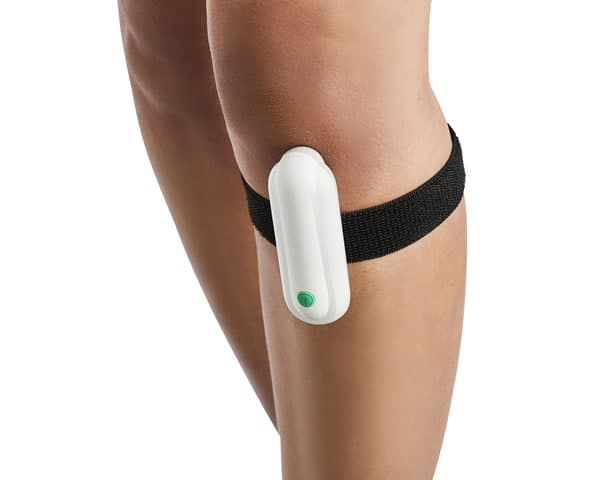How Kneease Works
Advanced vibration therapy backed by science

🔬 The Science
The Kneease device generates high-frequency vibrations that pass through the skin to reach nerve pathways. Pain signals travel through large sensory fibres, and by applying specific frequencies to the pain area, we can disrupt these transmissions.
The vibrations effectively 'scramble' sensory impulses so they cannot be interpreted as pain signals by the brain, providing natural relief from knee discomfort.
How the Process Works
High-Frequency Vibration
The device generates precise high-frequency vibrations that penetrate through the skin to reach nerve pathways.
Pain Signal Disruption
Vibrations interact with pain impulse transmissions, effectively 'scrambling' the sensory signals.
Brain Interpretation
The disrupted signals cannot be interpreted as pain by the brain, providing natural relief.
Device Features
Pre-programmed Settings
10 optimized modes for amplitude, frequency and pulse
Rechargeable Battery
Long-lasting power with convenient USB charging
Comfortable Strap
A soft velcro strap for secure, comfortable fitting
Micro-controller
Precision control system ensures consistent performance
Ready to Learn More?
Discover how to use your Kneease device effectively for optimal results.
Using Your Device →Research & Studies
Several studies have investigated the use of this sort of therapy to treat acute and chronic musculoskeletal conditions in various parts of the body. They show that vibration be used as a cost-effective and safe procedure to improve the symptoms of knee pain in patients.
- Pain alleviation by vibratory stimulation, Lundeberg et al, The Journal of Pain, 1984.
- Effect of vibratory stimulation on experimental and clinical pain, Lundeberg et al - Scandinavian Journal of Rehabilitative Medicine, 1988.
- Effects of vibratory stimulation on muscular pain threshold and blink response in human subjects, Pantaleo et al – Journal of Pain 1986.
- Treatment Options for Tennis Elbow - 2008.
- Vibration Anesthesia: Discussion.
- Vibratory stimulation for the alleviation of chronic pain, Acta Physiol Scand Suppl. 1983;523:1-51.
- The Effects of Extracorporeal Shockwave Therapy (ESWT) in Treating Lateral Epicondylitis in People Between 40 and 50 Years Old
- Shock wave therapy for patients with lateral epicondylitis of the elbow (tennis elbow): a one to two year follow-up study.

